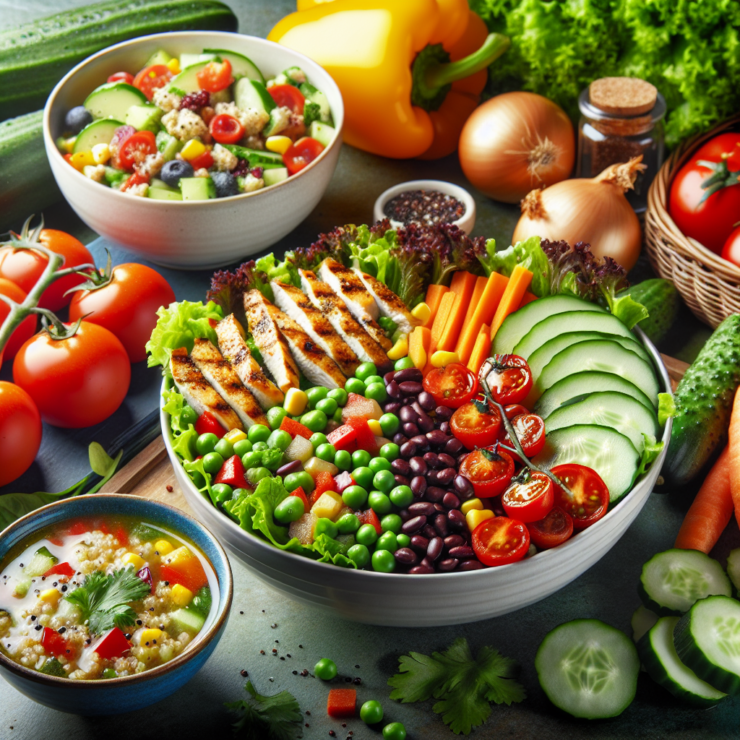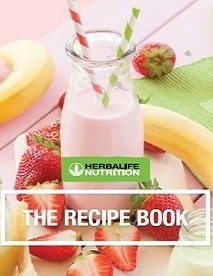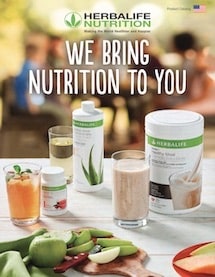The Quest for Low-Calorie Lunches
Maintaining a healthy weight or losing excess pounds often hinges on the principle of calorie management. Low-calorie lunches can be a cornerstone in this quest, providing the body with necessary nutrients without tipping the calorie scale too high.
The Importance of Calorie Management for Weight
Calorie management is the balancing act of consuming and expending energy. When an individual consumes fewer calories than they burn, a calorie deficit is created, which can lead to weight loss. For those seeking to maintain weight, striking a balance between calorie intake and energy expenditure is key. Low-calorie lunches can significantly contribute to this balance, offering satiety and nutrition while keeping calorie counts down.
| Activity Level | Estimated Daily Caloric Needs |
|---|---|
| Sedentary | 1,600-2,000 |
| Moderately Active | 2,000-2,200 |
| Active | 2,200-2,400 |
How Low-Calorie Meals Fit into a Balanced Diet
Low-calorie meals should not only be about cutting calories but also about incorporating a rich array of nutrients. A balanced diet that includes a variety of food groups ensures adequate vitamin and mineral intake, which is crucial for overall health and well-being. Low-calorie lunch recipes can include a spectrum of vegetables, lean proteins, whole grains, and healthy fats, all portioned to keep the calorie count in check while satisfying nutritional needs.
| Food Group | Suggested Serving | Average Calories |
|---|---|---|
| Vegetables | 1 cup | 25-50 |
| Fruits | 1 medium fruit | 60-90 |
| Whole Grains | 1/2 cup cooked | 100-150 |
| Lean Protein | 3 oz | 120-170 |
| Healthy Fats | 1 tbsp | 45-120 |
By incorporating low-calorie lunch recipes into one’s diet, individuals focused on weight management can enjoy delicious and satisfying meals without compromising their calorie goals. These meals are an integral part of a wholesome diet that fuels the body, supports metabolic functions, and aids in the maintenance of a healthy weight.
Crafting the Perfect Low-Calorie Lunch
Creating a low-calorie lunch that is both satisfying and delicious requires careful selection of ingredients and smart cooking strategies. This balance ensures that meals contribute to a weight management plan without the feeling of deprivation.
Key Ingredients for Low-Calorie Cooking
The foundation of a low-calorie lunch lies in choosing ingredients that are naturally low in calories yet high in nutrients. Fresh vegetables and fruits, lean proteins, whole grains, and legumes are excellent staples. Below is a table highlighting some key ingredients and their approximate calorie content.
| Ingredient | Serving Size | Calories |
|---|---|---|
| Mixed Greens | 2 cups | 20 |
| Cherry Tomatoes | 1 cup | 30 |
| Cucumber | 1/2 cup (sliced) | 8 |
| Chicken Breast (cooked) | 3 oz | 140 |
| Black Beans | 1/2 cup | 114 |
| Quinoa | 1/2 cup (cooked) | 111 |
| Apple | 1 medium | 95 |
| Berries | 1/2 cup | 32 |
These ingredients can be mixed and matched to create a variety of flavorful and nutritious lunches. Vegetables and fruits provide volume and fiber, which help in feeling full, while lean proteins and whole grains offer sustained energy throughout the afternoon.
Strategies for Reducing Calories Without Sacrificing Flavor
To reduce caloric intake without losing out on flavor, consider the following strategies:
-
Use herbs and spices: Enhance the taste of meals with a range of herbs and spices, which are virtually calorie-free. Fresh herbs like cilantro, basil, and mint can add a burst of flavor without adding calories.
-
Opt for low-calorie cooking methods: Methods such as baking, broiling, steaming, and grilling allow for the natural flavors of food to shine without the need for added fats.
-
Choose light dressings and sauces: Dressings and sauces can be hidden sources of calories. Opt for vinegar-based dressings, lemon juice, or Greek yogurt as bases for homemade sauces.
-
Control portions of higher-calorie ingredients: Nuts, seeds, cheeses, and dried fruits are nutrient-dense but high in calories. Use these sparingly to add texture and flavor.
-
Bulk up with vegetables: Non-starchy vegetables like leafy greens, bell peppers, and zucchini can add volume to meals for very few calories.
Implementing these strategies can help maintain a satisfying and flavorful lunch experience while adhering to a low-calorie dietary approach. Pairing these methods with smart ingredient choices lays the groundwork for delectable low-calorie lunches that support a balanced diet and weight management efforts.
Low-Calorie Lunch Recipes to Try
For those managing their weight, finding low-calorie lunch recipes that are both satisfying and flavorful is key. These recipes aim to deliver on nutrition without compromising on taste, making them perfect for a calorie-conscious lunchtime.
Refreshing Salads with a Nutritious Twist
Salads are a staple in the low-calorie meal plan, offering a refreshing and nutrient-packed option. By incorporating a variety of greens, colorful vegetables, lean proteins, and healthy fats, salads can be transformed into a fulfilling meal.
Mixed Greens with Grilled Chicken and Avocado
- Mixed greens: 2 cups
- Grilled chicken breast (sliced): 100g
- Avocado (sliced): 1/4 of a fruit
- Cherry tomatoes (halved): 1/2 cup
- Cucumber (sliced): 1/2 cup
- Dressing: Balsamic vinegar and lemon juice
| Ingredient | Calories |
|---|---|
| Mixed Greens | 20 |
| Grilled Chicken Breast | 165 |
| Avocado | 80 |
| Cherry Tomatoes | 15 |
| Cucumber | 8 |
| Dressing | 30 |
| Total | 318 |
Hearty Soups That Won’t Weigh You Down
Soups are an excellent low-calorie option that can be both hearty and heartwarming. By using broth as a base and incorporating a variety of vegetables, beans, or lean meats, soups can be a nutrient-dense lunch choice.
Vegetable Lentil Soup
- Vegetable broth: 2 cups
- Lentils (cooked): 1/2 cup
- Carrots (diced): 1/2 cup
- Celery (diced): 1/2 cup
- Onion (diced): 1/4 cup
- Spinach (chopped): 1 cup
- Seasoning: Garlic, thyme, and black pepper
| Ingredient | Calories |
|---|---|
| Vegetable Broth | 40 |
| Lentils | 115 |
| Carrots | 25 |
| Celery | 10 |
| Onion | 15 |
| Spinach | 7 |
| Seasoning | 5 |
| Total | 217 |
Wraps and Sandwiches with a Healthy Edge
Wraps and sandwiches can be easily adapted to fit into a low-calorie diet by choosing the right fillings and wraps. Opt for whole grain bread or low-calorie tortillas and pack them with vegetables, lean meats, or spreads made from legumes.
Turkey Lettuce Wrap
- Large lettuce leaves: 3 pieces
- Turkey breast (sliced): 100g
- Tomato (sliced): 1/2 of a fruit
- Cucumber (sliced): 1/4 cup
- Hummus: 2 tablespoons
- Red onion (thinly sliced): 1/4 cup
| Ingredient | Calories |
|---|---|
| Lettuce Leaves | 15 |
| Turkey Breast | 104 |
| Tomato | 11 |
| Cucumber | 4 |
| Hummus | 70 |
| Red Onion | 12 |
| Total | 216 |
These low-calorie lunch recipes are designed to satisfy hunger while contributing to a balanced and calorie-controlled diet. They offer a variety of tastes and textures to keep lunchtime both interesting and nutritious. With these recipes, individuals can enjoy delicious meals that support their weight management goals.
Cooking Techniques for Lower-Calorie Meals
Implementing the right cooking techniques can significantly reduce the calorie count of meals without compromising on taste. These methods help to retain the natural flavors and nutritional value of the ingredients while creating satisfying dishes.
Grilling and Roasting for Flavorful Vegetables
Grilling and roasting are excellent methods for preparing vegetables that highlight their natural sweetness and flavor. These techniques use high heat to create a delicious char and complexity without the need for excess oil or butter.
When grilling or roasting, a light brush of oil can help prevent sticking and enhance the taste. Opt for oils with a higher smoke point to avoid the formation of harmful free radicals. Here’s a comparison of calorie savings when using less oil:
| Cooking Method | Oil Used (tbsp) | Calories Saved |
|---|---|---|
| Sautéing | 2 | 0 |
| Grilling | 1 | 120 |
| Roasting | 1/2 | 180 |
Steaming and Poaching for Lean Proteins
Steaming and poaching are gentle cooking methods that preserve moisture and tenderness in lean proteins like chicken, fish, and tofu. These techniques do not require added fats, reducing overall calorie content while maintaining the integrity of the protein.
Lean proteins are the cornerstone of low-calorie lunches, as they provide essential nutrients without excessive calories. Here’s a look at calorie counts for various lean proteins prepared with these methods:
| Protein | Cooking Method | Calories (per 100g) |
|---|---|---|
| Chicken Breast | Steamed | 165 |
| White Fish | Poached | 100 |
| Tofu | Steamed | 76 |
Dressings and Sauces with Low-Calorie Ingredients
Dressings and sauces can transform a dish but often add unwanted calories. By using low-calorie ingredients, such as herbs, spices, vinegar, citrus juice, and Greek yogurt, one can create flavorful accompaniments that enhance rather than overpower the main ingredients.
By substituting high-calorie ingredients with healthier alternatives, the calorie count of dressings and sauces can be significantly reduced. Below is a comparison of traditional and low-calorie ingredients in dressings:
| Traditional Ingredient | Low-Calorie Substitute | Calorie Difference (per tbsp) |
|---|---|---|
| Mayonnaise | Greek Yogurt | 90 |
| Sour Cream | Buttermilk | 30 |
| Oil-Based Dressing | Vinegar-Based Dressing | 70 |
Using these cooking techniques and ingredient swaps, low-calorie lunch recipes can be both nourishing and delicious. They allow individuals to enjoy a variety of foods while managing their calorie intake and supporting their weight management goals.
Making the Most of Your Low-Calorie Lunch
Creating a fulfilling low-calorie lunch requires more than just choosing the right foods; it’s also about managing portions, ensuring variety, and combining meals with healthy snacks for long-lasting satisfaction.
Portion Control and Meal Satisfaction
Portion control is fundamental in managing calorie intake while ensuring that one remains satiated after a meal. It’s not just about reducing the amount of food but serving the right balance of nutrients. Here’s a guide to typical serving sizes for a balanced low-calorie lunch:
| Food Group | Suggested Serving Size |
|---|---|
| Vegetables | 2 cups (leafy greens) or 1 cup (other vegetables) |
| Protein | 3-4 oz lean protein |
| Whole Grains | 1/2 cup cooked grains |
| Healthy Fats | 1-2 tablespoons (e.g., avocado, nuts, seeds, or dressings) |
One can maintain meal satisfaction by ensuring each lunch portion includes a variety of food groups. Including fiber-rich foods, like vegetables and whole grains, can improve feelings of fullness, which helps to reduce the urge for unnecessary snacking later.
Incorporating Variety into Your Lunch Routine
Variety isn’t just the spice of life; it’s also key to a nutritious diet that keeps one engaged and satisfied. To avoid the monotony of eating the same meals, try rotating between different types of greens, proteins, and whole grains. Here are some ideas to infuse variety into your weekly lunch menu:
- Monday: Spinach salad with grilled chicken, quinoa, and cherry tomatoes.
- Tuesday: Lentil soup with a variety of vegetables and a side of whole-grain bread.
- Wednesday: Turkey wrap with mixed greens and a tangy yogurt dressing.
- Thursday: Sushi bowl with brown rice, edamame, cucumber, and seaweed.
- Friday: Stuffed bell peppers with lean ground turkey and wild rice.
By mixing up the ingredients and flavors, you can look forward to each meal and avoid the temptation of high-calorie options.
Pairing with Healthy Snacks for Added Fullness
To complement a low-calorie lunch and maintain energy levels throughout the afternoon, pairing your meal with healthy snacks can be effective. Snacks that are high in protein and fiber can help sustain fullness and provide vital nutrients. Consider these snack pairings to keep you full and satisfied:
| Snack | Calories | Pairing Suggestion |
|---|---|---|
| Greek yogurt | 100 per serving | Perfect after a vegetable-rich lunch for added protein. |
| Almonds | 160 per ounce | Combine with a fruit salad for a mix of healthy fats and fiber. |
| Carrot sticks | 50 per cup | Dip in hummus for a crunchy and protein-packed midday snack. |
Implementing these strategies into your daily routine can elevate the quality of your low-calorie lunches, ensuring they are not only nutritionally adequate but also enjoyable and fulfilling. With thoughtful planning and a touch of creativity, your lunch can be a cornerstone in your calorie-conscious diet.
Health and Nutrition Disclaimer: Please note that the recipes and advice provided are for general information purposes only and should not be considered as medical or professional health advice. Always consult with a healthcare professional or a dietitian before starting any new diet or making significant changes to your eating habits, especially if you have health concerns or conditions.











